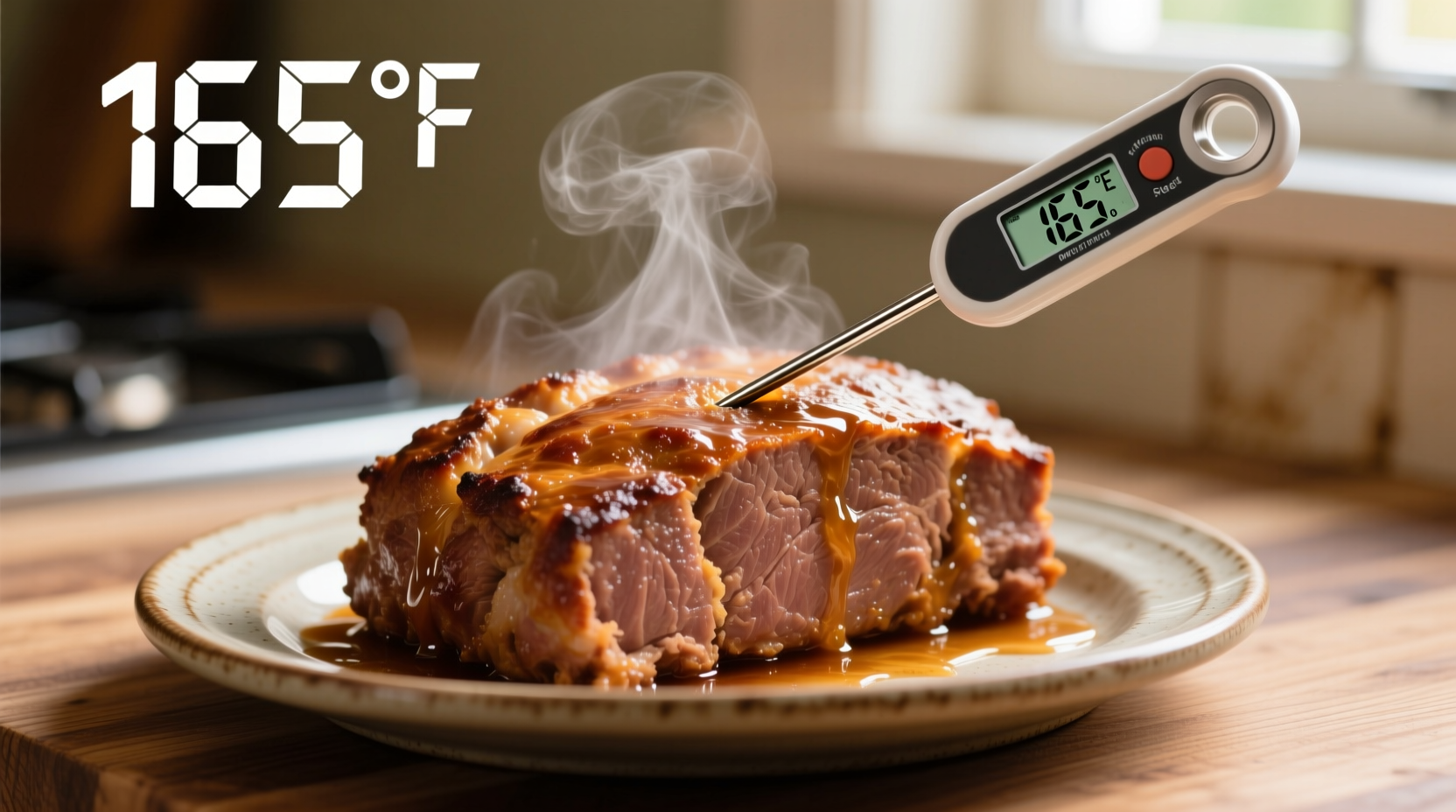Nothing ruins a comforting meatloaf dinner faster than undercooked centers or dry, overcooked edges. Getting the timing right separates a perfectly tender, juicy meatloaf from a kitchen disaster. While many recipes give time estimates, the real secret lies in understanding the science behind meat cooking and recognizing the critical variables that affect your specific loaf.
Why Internal Temperature Trumps Cooking Time
Professional chefs and food safety experts agree: relying solely on cooking time is dangerous. The USDA Food Safety and Inspection Service emphasizes that internal temperature is the only reliable indicator of meat safety. Ground meats like meatloaf require reaching 160°F (71°C) to eliminate harmful bacteria like E. coli and Salmonella.
"Time-based cooking instructions without temperature verification put consumers at risk," explains Dr. Mindy Brashears, former USDA Undersecretary for Food Safety. "The density of the meat mixture, oven calibration, and even the type of baking pan significantly impact how quickly heat penetrates the loaf."
Meatloaf Size vs. Cooking Time Guide
| Meatloaf Weight | Recommended Time at 350°F | Minimum Internal Temp | Resting Time |
|---|---|---|---|
| 1 pound | 35-45 minutes | 160°F (71°C) | 10 minutes |
| 1.5 pounds | 50-60 minutes | 160°F (71°C) | 12 minutes |
| 2 pounds | 65-75 minutes | 160°F (71°C) | 15 minutes |
| 2.5+ pounds | 80-90+ minutes | 160°F (71°C) | 20 minutes |
Note: These times assume conventional ovens. Convection ovens typically require 25% less cooking time. Always verify with a thermometer.

Step-by-Step Cooking Process
Preparation Essentials
- Use a reliable meat thermometer - Digital instant-read models provide the most accurate results
- Shape matters - Form loaves with rounded corners to prevent overcooking at edges
- Choose the right pan - Glass or ceramic retains heat better than metal for more even cooking
Monitoring During Cooking
Start checking temperature 10-15 minutes before the estimated finish time. Insert the thermometer into the thickest part of the loaf, avoiding any fat pockets or the pan bottom. If using a loaf pan, check near the center rather than the edges.
Many home cooks make the mistake of opening the oven too frequently. Each time you open the oven door, the temperature drops 25-50°F, extending cooking time. Use your oven light and window instead of opening the door.
Contextual Factors That Change Cooking Time
Understanding these variables prevents common meatloaf failures:
- Oven accuracy - Many home ovens run 25°F hotter or cooler than set. An oven thermometer costs $5 and prevents cooking disasters
- Meat composition - Higher fat content (like 80/20 ground beef) cooks faster than leaner blends
- Added ingredients - Vegetables with high water content (zucchini, mushrooms) extend cooking time
- Starting temperature - Chilled mixtures require 10-15 minutes longer than room-temperature preparations
According to a 2023 survey by the American Meat Science Association, 68% of home cooks who reported meatloaf failures admitted they didn't use a thermometer. The most common issues were dry texture (42%) and undercooked centers (31%).
Troubleshooting Common Problems
"My meatloaf is brown but still undercooked inside"
This happens when the oven temperature is too high. Reduce heat to 325°F and tent the loaf with foil to prevent over-browning while the center cooks through.
"My meatloaf falls apart when slicing"
Insufficient binding agents or skipping the resting period causes this. Let meatloaf rest 10-15 minutes after cooking - this allows proteins to reabsorb juices and set the structure. Adding 1 extra egg or 1/4 cup breadcrumbs per pound of meat improves binding.
"The top is burning before the center cooks"
Cover loosely with foil after the first 45 minutes. For convection ovens, reduce temperature by 25°F and check 20% earlier than conventional oven times.
Resting: The Critical Final Step
Resist cutting immediately! Resting allows:
- Juices to redistribute throughout the loaf
- Residual heat to finish cooking the center
- Proteins to relax for cleaner slices
For best results, tent with foil and rest 10-15 minutes (depending on size). During this time, the internal temperature typically rises 5-10°F while juices settle.
Safety First: When Time Alone Isn't Enough
The FDA Food Code specifies that ground meats must reach 158°F for 15 seconds to be safe, but recommends 160°F as a practical target for home cooks without precision equipment. Never rely on color alone - perfectly cooked meatloaf can retain a pink hue due to myoglobin reactions, especially with certain seasonings like paprika or nitrate-containing ingredients.
For complete food safety guidelines, consult the USDA's Safe Minimum Internal Temperature Chart.











 浙公网安备
33010002000092号
浙公网安备
33010002000092号 浙B2-20120091-4
浙B2-20120091-4